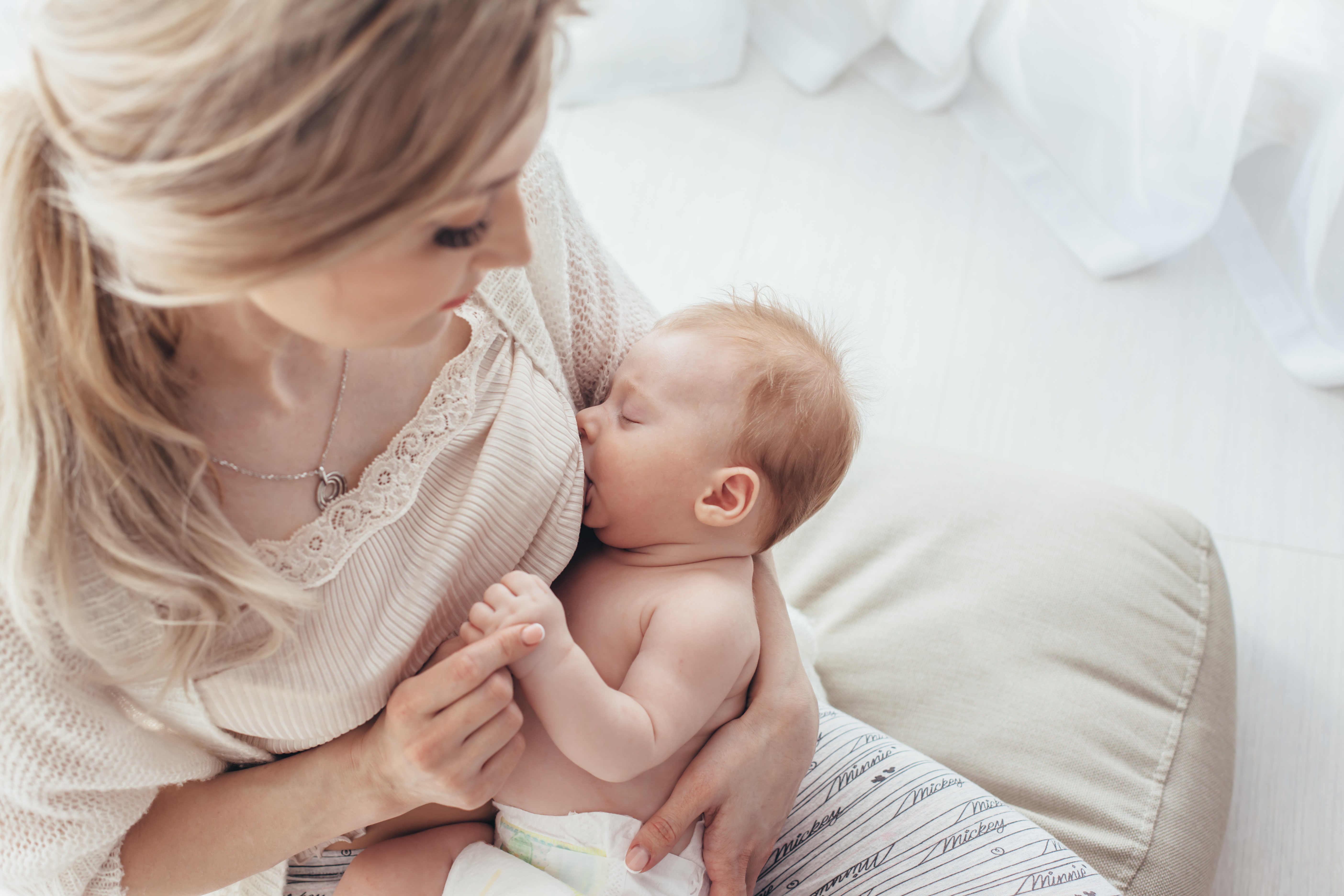06 Aug Sore Nipples when Breastfeeding
 Breast milk is the best food for your baby and you. It’s sterile, nutritious, has several health benefits and is available on tap! However, breastfeeding can be tough on your nipples, especially in the early days. Experiencing painful or cracked nipples is one of the most common reasons for stopping breastfeeding. But with support and treatment you can soothe your sore nipples so that feeding your baby is pleasurable and pain-free1.
Breast milk is the best food for your baby and you. It’s sterile, nutritious, has several health benefits and is available on tap! However, breastfeeding can be tough on your nipples, especially in the early days. Experiencing painful or cracked nipples is one of the most common reasons for stopping breastfeeding. But with support and treatment you can soothe your sore nipples so that feeding your baby is pleasurable and pain-free1.
Your nipples are sensitive, but they’re also designed to feed your baby. Glands called Montgomery’s Tubercles moisturise and protect the delicate tissue. Many women’s nipples become sore, cracked, or painful when they first start breastfeeding. It’s one of the most common complications, especially when you and your baby are getting the hang of the process. When your nipples are painful, it can make feeding feel like torture. However, with guidance, you can resolve the problem2.
What causes sore and cracked nipples?
Breastfeeding looks effortless, but it can take time for you and your baby to perfect your technique. The most common cause of sore nipples is your baby not attaching to the breast properly, or feeding in the wrong position. Your little one may be sucking on just the nipple, instead of the whole areola. Alternatively, the nipple may push against the hard palate at the top of your baby’s mouth, which can pinch and cause pain. If, after feeding your nipples look flat, wedge-shaped, or white, your baby may not be adequately attached3.
Having sore nipples can be painful and distressing. If your nipples are cracked, or bleeding don’t panic or stop breastfeeding, get help as soon as possible:
- See an expert: Your midwife, health visitor, or a breastfeeding advisor can watch you feed your baby. They’ll check your position and the way in which your little one latches on.
Your baby should take the whole of the nipple and the surrounding pigmented area into their mouth when they feed. When they’re correctly attached, your nipple will lie against the soft palate towards the back of their mouth, which shouldn’t result in pinching or pain.
- Play with positions: Experiment with feeding positions to see if they help your baby latch on more effectively. Chat to your midwife or health visitor for support and guidance.
- Carry on feeding: Try to continue breastfeeding regularly to maintain your supply and prevent the breasts from becoming engorged and painful. Keeping feeds short will not help with the pain and may in fact affect the amount of milk you produce.
- Helping hand: If nipple cracking and bleeding is making feeding too painful, try expressing milk with your hand or a pump, to give it time to heal.
- Change breast pads regularly: Use a clean pad after each feed and replace the pads if they get wet in between feeds. Avoid plastic-backed pads to allow air to circulate.
- Cotton Bra: Wear a soft, cotton bra if possible as this will allow the air to circulate.
- Moisturise: After each feed rub a little of your breast milk to moisturise and soothe your nipples. Alternatively you can apply AproDerm® Colloidal Oat to the nipple area after each feed.
- Avoid Soap: Soaps can dry out your skin, so it’s best to avoid it. Wash your breasts with either plain water or, if you want, use a soap substitute instead, such as AproDerm® Colloidal Oat Cream.
- Don’t use nipple shields: Nipple shields are protective covers which you wear over your nipples while you feed. However, they won’t help your baby attach and may even cause incorrect attachment. Instead, you should get expert advice and guidance3.
When to see your doctor
Cracked and bleeding nipples are vulnerable to infection, which will increase pain and inflammation and slow down healing. See your doctor if your nipple pain doesn’t improve despite correct attachment and feeding technique.
A thrush or candida infection can cause nipple pain and inflammation. Candida is more likely to infect damaged nipples. Your baby could also develop thrush in their mouth and nappy rash. If you treat your nipples without treating your baby too, the problem is likely to come back. So, see your doctor for treatment for your breasts and your baby4.
We would love to hear from you.
References
- Kent J, Ashton E, Hardwick C, et al (2015) ‘Nipple Pain in Breastfeeding Mothers: Incidence, Causes and Treatments’ International Journal of Environmental Research and Public Health 12(10): 12247-12263
- National Childbirth Trust (2020) ‘Sore Nipples When Breastfeeding’ NCT, viewed 5 August 2020 <https://www.nct.org.uk/baby-toddler/feeding/common-concerns/sore-nipples-when-breastfeeding/>
- NHS (2020) ‘Benefits Of Breastfeeding’ NHS, viewed 5 August 2020 <https://www.nhs.uk/conditions/pregnancy-and-baby/benefits-breastfeeding/>
- NHS (2020) ‘Sore Or Cracked Nipples When Breastfeeding’ NHS, viewed 5 August 2020 <https://www.nhs.uk/conditions/pregnancy-and-baby/sore-cracked-nipples-breastfeeding/>



Sorry, the comment form is closed at this time.